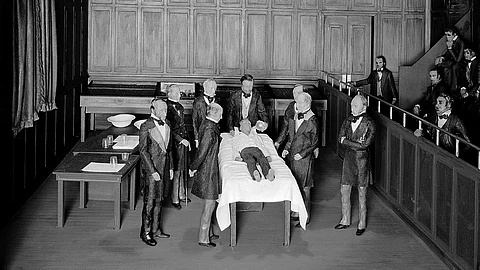On October 16th, 1846, in the surgical amphitheater of Boston's Massachusetts General Hospital, William Morton, an American dentist gave the first successful demonstration of anesthesia using nitrous oxide. He administered nitrous oxide on the left side of the neck to a patient named Glenn Abbott, before undergoing the surgical removal of a vascular tumor. The surgery was performed by a well-known surgeon named John Warren. After the successful administration, Warren said, "Gentlemen, this is no humbug," and Morton received a patent for the anesthetic use of nitrous oxide.
But before Morton, it was Horace Wells who first discovered the anesthetic effect of nitrous oxide. Initially, he tried nitrous oxide on himself letting his fellow dentist, John Riggs extract his tooth. After its successful completion, he tried it on 12 patients. But when he publicly demonstrated it in front of medical students at Massachusetts General Hospital in Boston, the patient cried out in pain. However, the patient admitted that even though he cried at first he didn't experience pain. Later, it was discovered that nitrous oxide does not work on obese or alcoholic patients, and that patient was both obese and alcoholic.
After Morton's successful administration, Warren wrote letters to publications regarding his trials which were conducted before. But his efforts went in vain. However, the Parisian society honored him as the pioneer who discovered and performed surgical operations without pain. This happened 12 days before his death, and he died unaware of these decisions. Horace Wells is regarded as the 'Father of anesthesia'.
Nitrous oxide is an inhalation anesthetic and is also known as 'laughing gas' because it provides a tingling sensation followed by a euphoric effect. During the initial days of discovery, the gas was administered to the patients using a simple breathing bag made of rubber cloth. Later, the method was changed to administering it through a mask attached to a gas cylinder.


